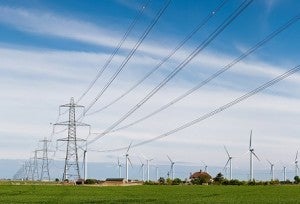 In the U.S., the electricity sector accounts for over a third of the country’s yearly greenhouse gas emissions, contributing more to climate change than any other sector, including transportation.
In the U.S., the electricity sector accounts for over a third of the country’s yearly greenhouse gas emissions, contributing more to climate change than any other sector, including transportation.
Furthermore, electricity costs have increased dramatically over the years, and are projected to continue their upward trend. Utilities and regulators have made great strides in promoting renewable energy, increasing the efficiency of the power grid, and reducing harmful pollution. However, customers, too, can be part of the solution by better managing their use of electricity – especially during those times when it is most expensive and dirty to produce.
Electricity is more expensive during ‘critical peaks’
The cost of producing electricity – and the carbon emissions associated with it – varies significantly throughout the day, depending on electricity demand at any point in time. For example, when a heat wave occurs and many customers begin cooling their homes after work, demand skyrockets and creates what is known as a ‘critical peak.’ Read More














